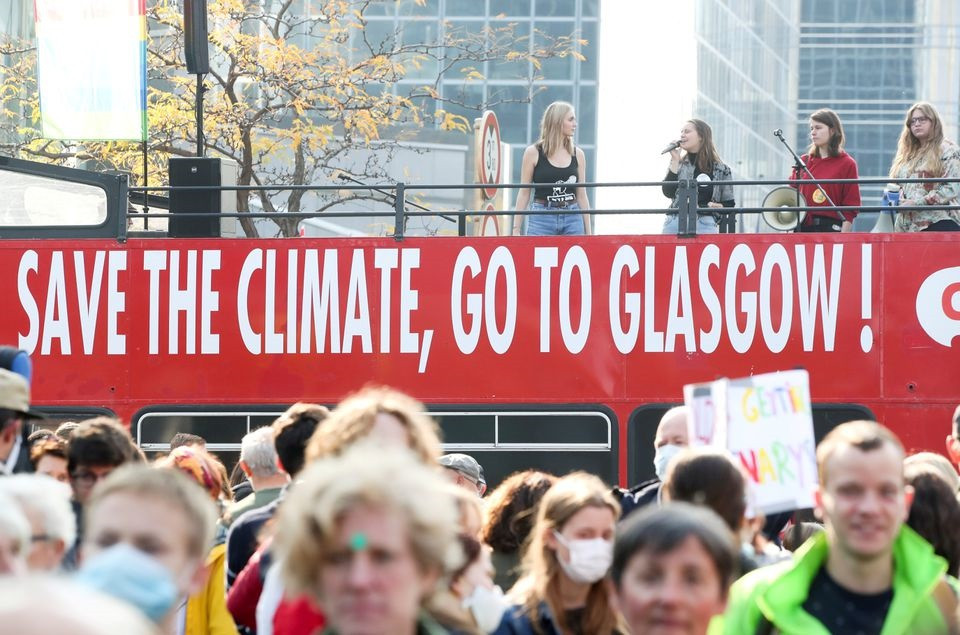Popular Reads
Top Results
Can't find what you're looking for?
View all search resultsPopular Reads
Top Results
Can't find what you're looking for?
View all search resultsBeyond COP26: Four steps CEOs should take now
Companies will face more requirements to report on their climate risks.
Change text size
Gift Premium Articles
to Anyone
M
anaging climate change is the greatest challenge of our time, and the 26th United Nations Conference of the Parties in Glasgow, Scotland—better known as COP26—represents a milestone in the world’s efforts to take concerted action.
Six years after the landmark Paris Agreement, nations are taking stock of the progress they’ve made on previous commitments, including their promises to reduce emissions and adapt to climate change. While the policy work continues, the question that many senior executives of corporations will ask is, “What do we do after COP26?”
The first thing they’ll have to do is recognize that with all the attention on climate change this year, things are speeding up in some key areas.
First, regulations. Carbon-taxation and emissions-trading schemes will expand, and the price of carbon (already above €60 per ton in Europe) will probably rise. Governments will promise more subsides to spur change, like the United States Department of Energy’s Energy Earthshots initiative, which is designed to reduce the cost of green hydrogen.
Second, financial disclosure. Companies will face more requirements to report on their climate risks. The International Financial Reporting Standards Foundation is laying the groundwork for a set of common reporting standards, and the US Securities and Exchange Commission is considering climate-change disclosures.
Third, science-based targets. More companies will set ambitious decarbonization targets and sign onto the Science Based Targets Initiative (SBTi), the gold standard for tracking these goals. More companies are including Scope 3 emissions in their plans.
Fourth, scrutiny from investors. Sustainability, and climate change in particular, will become even more important for investment decisions. Fund managers are responding: the Net Zero Asset Managers Initiative brings together 128 fund managers with US$43 trillion under their care in a pledge to make investment decisions that support the goal of net-zero emissions by 2050 or sooner.
Fifth, customer expectations. Pressure from customers is leading more companies to look beyond their own operations and across their supply chains and use of their products. BMW plans to reduce carbon emissions across the entire life cycle of its vehicles, from production through ownership, by at least 40 percent by 2030.
Most important, the focus is going to shift from setting targets to delivering results. Until now, executives may have been rewarded just for stating goals; from here on, they’ll need to show real reductions. Here are four concrete things they can do to start reducing.
First, make carbon transition a pillar of strategy. Too often, sustainability and carbon transition come as afterthoughts, but they should be baked into the strategy practice. The risks and opportunities of climate change should shape decisions about new products and how to improve operations.
UK supermarket leader Sainsbury’s is making carbon reduction a cornerstone of its strategy, with pledges to reduce Scope 1 and 2 emissions to net zero by 2040, and to cut Scope 3 emissions by 30 percent by 2030. Among many changes, it has switched to energy-saving lithium-ion pallet trucks.
Second, get more bang for your net-zero buck. Companies are pushing their carbon transitions as rigorously as any other business initiatives, which means improving efficiency while reducing cost. German engineering and technology firm Bosch says it has been carbon neutral in Scope 1 and 2 emissions since 2020, thanks to greater energy efficiency.
And it’s also about finding opportunities to monetize investments in sustainable technologies. Mexican cement producer Cemex sells a line of concrete that contains 70 percent less carbon, and it offsets the rest of the related emissions to deliver a carbon-neutral product.
Third, embed carbon transition into the fabric of the business. Even the best plans will fall flat without the right supporting practices. Pricing, incentives, and tracking are three practices that help carbon transitions stay on track.
- Pricing. More and more companies price carbon internally, like any other cost of doing business. More than 2,000 companies representing $27 trillion of market capitalization have embraced it, with a median price of $25 per ton CO2 equivalent in 2020.
- Incentives. Linking compensation incentives to carbon-reduction efforts keeps them on the agenda. French food producer Danone, for example, ties 20 percent of senior executives’ annual compensation to social and environmental targets.
- Tracking. New software systems extract data from enterprise resource planning and other corporate systems, then calculate the precise carbon footprint and issue progress reports.
Fourth, avoid the hourglass effect. In many companies, top management and new employees are enthusiastic about sustainability, while middle management is left to solve the revenue, cost, and safety implications. Many have little or no experience managing carbon reduction, but companies can support them by educating everyone about carbon reduction in their industry and clarifying the rules for trade-offs.
The transition away from carbon and toward net-zero emissions is likely to be a top priority for many executives for the rest of their careers. For most companies, the window for consideration has closed. It’s time to act and deliver meaningful carbon reductions.
***
Soegeng Wibowo and Dominik Utama are partners at Bain & Company, based in Jakarta. Torsten Lichtenau is based in London and leads Bain & Company’s Carbon Transition Impact Area globally.









